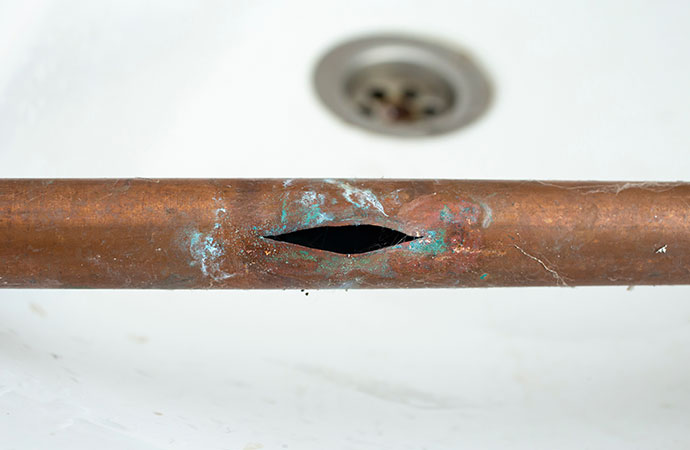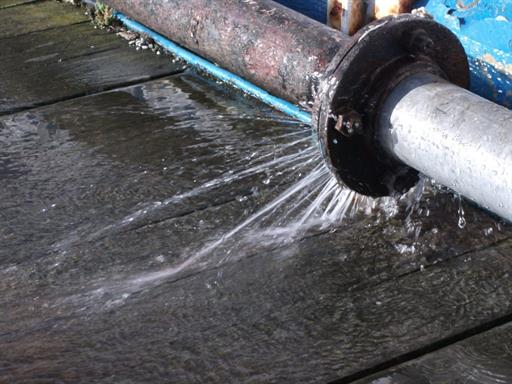Spotting and Quickly Fixing a Burst Pipe: Key Steps
Spotting and Quickly Fixing a Burst Pipe: Key Steps
Blog Article
What are your thoughts about How to Install and Connect a New Dishwasher?

A burst pipeline is a significant emergency; you can only stand as you watch water you pay dearly to rejoin with the earth. In even worse cases, you observe a swimming pool on your kitchen area flooring, which is a terrific journey danger, especially if you have youngsters around. If the pipe that burst remained in your walls, problem: you might need to paint that entire area.
How can a catastrophe like a ruptured pipe be prevented as well as handled? Well, by paying attention to your specialist emergency plumbings and complying with these regulations.
How do I know when my pipelines have ruptured?
Changing water stress
Pipes do not just burst in a day. You might have seen that your kitchen tap or shower does not run right away when you transform the tap. It may stop for a few seconds and afterwards blast you with more pressure than common.
In various other instances, the water may seem typical in the beginning, then drop in pressure after a few seconds.
Damp walls and water stains
Before a pipe ruptureds, it will certainly leakage, the majority of times. If this persistent dripping goes unnoticed, the leak may finish right into a vast gash in your pipe. One simple method to avoid this emergency is to keep an eye out for damp walls ad water stains. These water stains will lead you right to the leak.
Puddles under pipelines and sinks
When a pipe ruptureds, the discharge creates a puddle. It may appear that the pool is growing in dimension, as well as despite the number of times you wipe the puddle, in a few minutes, there's one more one waiting to be cleansed. Often, you might not be able to trace the puddle to any type of visible pipelines. This is an indicator to call a specialist plumber.
Untraceable trickling sounds
Pipeline ruptureds can take place in the most unpleasant locations, like within concrete, inside walls, or under sinks. When your home goes quiet, you might be able to hear an annoyingly relentless trickling sound. Even after you've checked your shower head and also kitchen area faucet, the trickling might continue.
Dear visitor, the trickling might be coming from a pipe inside your walls. There isn't much you can do about that, other than inform a professional plumber.
Shut down the Water
When water freezes, it expands in volume by about 9 percent. And also it increases with tremendous pressure: The pressure inside pipes may go from 40 pounds per square inch to 40,000 psi! No pipeline can hold that much stress, so it bursts. The break might happen where the ice forms, but more frequently, it occurs where water stress finds a weak spot in the pipeline. That might be inches or perhaps feet from the frozen area. Locate the water shutoff valve and also turn off the water to stop more damages. You might also require to turn off the electrical power as well, relying on where the leaks occurs as well as how large it is.
Contaminated water
Many individuals assume a ruptured pipe is a one-way outlet. Quite the contrary. As water drains of the hole or tear in your plumbing system, impurities discover their way in.
Your water may be infected from the resource, so if you can, check if your water tank has any kind of issues. Nevertheless, if your drinking water is supplied and also purified by the local government, you should call your plumber quickly if you see or smell anything amusing in your water.
What do I do when I identify a burst pipeline?
Your water meter will remain to run even while your water wastes. To decrease your losses, discover the major controls as well as transform the supply off. The water pipe are an above-ground framework at the edge of your home.
How to Fix & Detect a Leaking Pipe
How Do I Know if a Pipe is Leaking?
Leak detection tests can help you determine if your pipe has a leak. Even if you don’t see an apparent leak, you should still conduct leak detection tests regularly to save water and money—and prevent major damage to your home.
Water meter. It can be helpful to figure out what your usual water meter usage numbers are and then monitor them regularly. To monitor your meter, first, turn off all water faucets in your home. Check the meter and write down the numbers. In a few hours, check the meter again. If the numbers have changed, you have a leak. Water gauge. Use a water gauge to test your water pressure. Your showerhead should produce a certain amount of water pressure based on its model and design. If the pressure is lower than it is supposed to be for that specific showerhead, your home likely has a leak. Puddles. Look inside your bathroom, laundry, and kitchen sink cabinets. Puddles around the cabinets or around toilets, tubs, showers, and washing machines indicate the presence of a leaking pipe. You may also notice loose tiles, peeling or flaking paint, or mold caused by water accumulation. Napkin test. Even if you don’t see any puddles, you may still have a leak. You can test for water leaks in the bathroom, laundry, and kitchen by wiping below-sink connections with a napkin, paper towel, or piece of toilet paper. If it becomes damp, you probably have a leaking pipe under the sink. Discolored walls. Walls that are discolored—usually with brown or yellow stains—or bulging might mean that they have been impacted by water damage caused by a leaking pipe. Smell. A leaky pipe will create sitting water, and over time, that water may develop a musty smell. If your home smells musty, but you can’t locate the source, it may be due to a leak. Steps for Fixing a Leaking Pipe
A leaky drain can be remedied by tightening the pipe base, replacing the drain seal, caulking the rim, and tightening the pipe nut. Similarly, a leaking toilet pipe can be treated by tightening the packing nut. You may also need to replace the valve. A leaky faucet may just need tightening or replacement of the washers. If that doesn’t work, consider replacing your faucet. If your pipe has a hole in it, you may want to use a pipe leak sealer or pipe leak tape. This quick fix for water pipe leaks can also temporarily fix a copper pipe leak. https://www.ahs.com/home-matters/quick-tips/how-to-tell-if-pipes-are-leaking/

I'm certainly very curious about What to Know Before Installing a Dishwasher and I hope you liked the new blog entry. Sharing is good. Helping people is fun. I cherish reading our article about How to Prepare for Your Dishwasher Installation.
Need fast action? Dial. Report this page